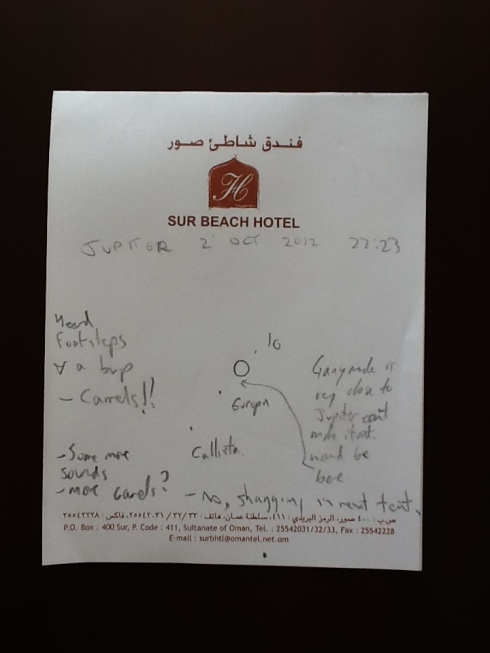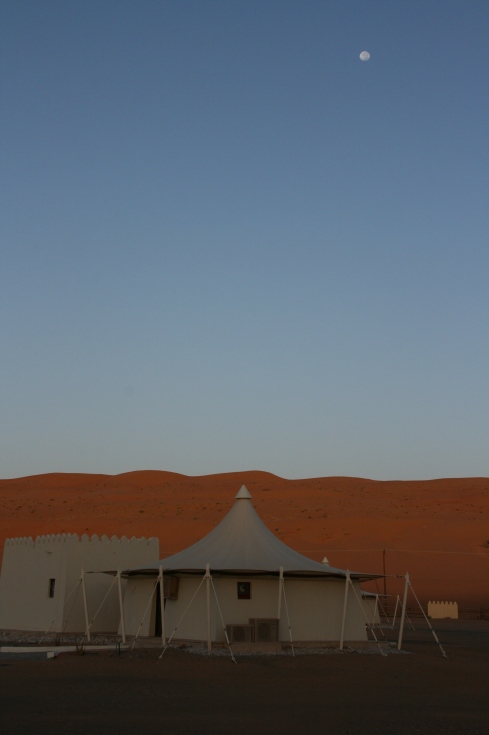Location: Barr Al Jissa Shangri La Hotel, Muscat, Oman
Conditions: Clear
Equipment: Naked eye, Celestron Skymaster 15×50 binoculars
Highlights: Mars,
18:00-ish watched the sunset from the sea having a bob. Best way to watch the sun go down. The resort had a Lazy River running through it – a long loop styled on a falaj (Omani irrigation system used to bring water from the pools in the upper reaches of the wadis to the villages) with water jets to keep it flowing. We had one last float around on a rubber ring round this from where I could see a few stars coming out and in particular Mars high to the West.
We returned to our room via the pool where I had a moment lying on my back in the empty pool looking up at the stars at the zenith. The moon was not yet up. Once again Cygnus was at the zenith and I could just make out a faint fuzz of the Milky Way across to Cassiopeia. That’s quite a way to see it I suppose and in some ways summed up the great day we’d had doing very little around the resort, just reading and messing about in the water.
We ate on the Corniche in Muttrach at Fast Food and Juice Centre cafe again, which serves great shawarma, felafel, hummus and a really refreshing lemon mint drink. A Tunisian family at the next table struck up conversation in a mix of French and English. They lived and worked in Oman and were very hospitable, inviting us to their home, which we had to decline as we were flying onto Dubai the next day. When we came to settle our bill we found they had very kindly paid it. “Welcome to Oman!”. This friendliness and generosity seems to be very much part of the culture and having travelled and been hassled in other countries was very surprising and refreshing. All too often you think that somebody has an angle. Whilst you should never be naive, people in Oman and generally and genuinely nice.
11:20 Back at the room, another observation of Jupiter through the bins. Didn’t sketch this time but did take a screenshot with SkySafari+ just to track the Galilean moons again.
screenshot from SkySafari+ Where is Io though?
Having sketched and tracked the positions of Jupiter’s moons nearly every evening I ought to make a chart of my observations to show the day to day movements. I know there is one printed in Sky at Night magazine each month but it would be interesting to compare and confirm my observations.
I also took some photos of Orion. I’ll have a go a stacking and processing them later, when I’m back home and it’s a cloudy night.
This was my last night of stargazing on this holiday. After this we had a couple of days in Dubai before returning home. This had been an incredible holiday. It was very much a holiday and all the stargazing I did was a bonus extra. I tried not to let it dominate but at the same time took the opportunity where I could.
Observing programs
Messier: 8/110
Lunar 100 observed: 8/100
Lunar 100 imaged: 8/100















![My Broken Heart [Explore 15/5/24] My Broken Heart [Explore 15/5/24]](https://live.staticflickr.com/65535/53722911143_d5a75671ec_s.jpg)


